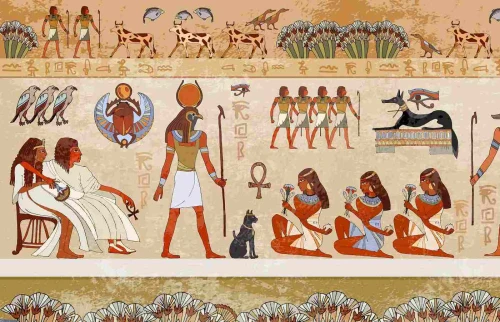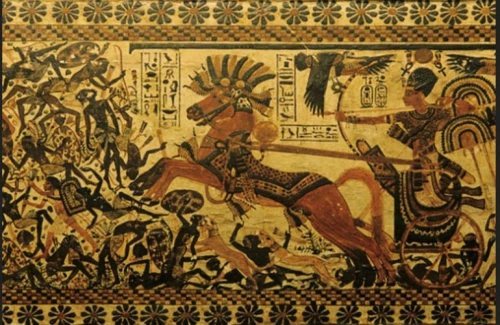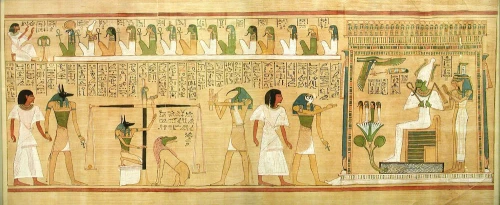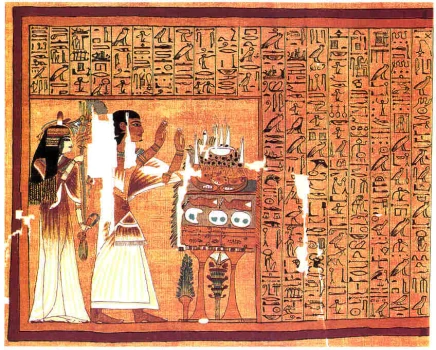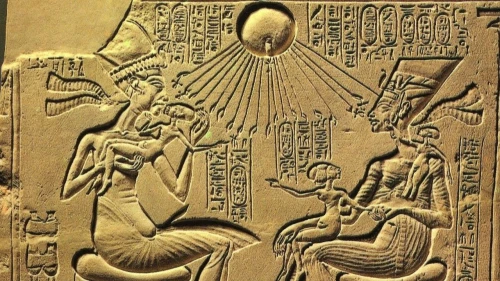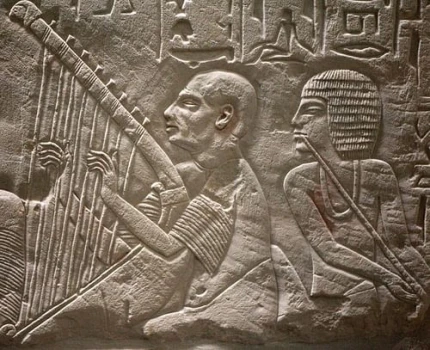
HEB-SED FESTIVAL Celebrating the rejuvenation of the king’s powers every 30 years, the heb-sed festival was a demonstration of a king’s strength and prowess. During the festival, the king ran around a heb-sed court performing feats of strength to demonstrate his ability to continue to rule Egypt. In doing so, he experienced a rebirth, maintaining his position as a god on Earth. The heb-sed court of King Zoser at Saqqara is a long, rectangular, open court where the king performed the heb-sed ritual, part of which was to wrestle with a young man to prove he was strong enough to continue ruling Egypt. A limestone relief in a chamber under the Step Pyramid shows King Zoser during his heb-sed festival running between the markers representing Upper and Lower Egypt. On the east and west sides of the open courtyard are several symbolic chapels—the interiors were filled with rubble—and only the platforms in front of the chapel were used. Statues of the king and the gods were placed in niches along the wall, and the platforms may have been used for ceremonies during the festival. Heb-sed must have begun in Egypt’s Predynastic period with rituals like the “raising of the DJED Pillar” (an ancient sign for Osiris) that represented the strength and stability of the king. The earliest reference to a web-sed is shown on the Narmer mace head. Although a king’s heb-sed was traditionally celebrated every 30 years, often a king chose to celebrate his festival or jubilee much more often. Ramses II (Ramses the Great) celebrated 14 heb-sed festivals or jubilees.
 English
English
 Spain
Spain

